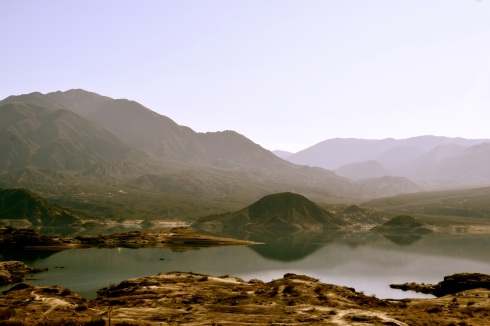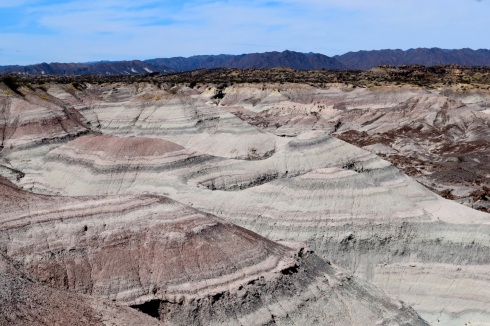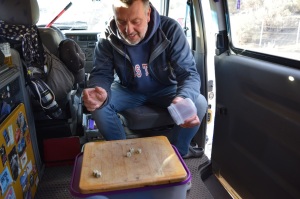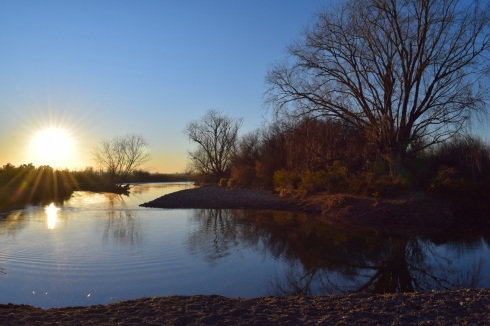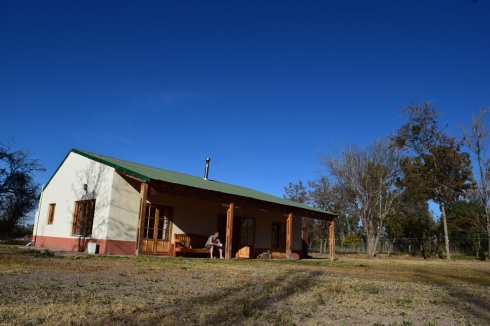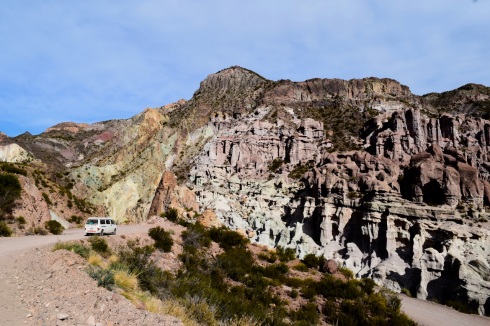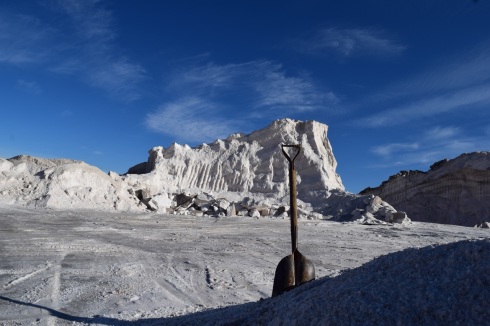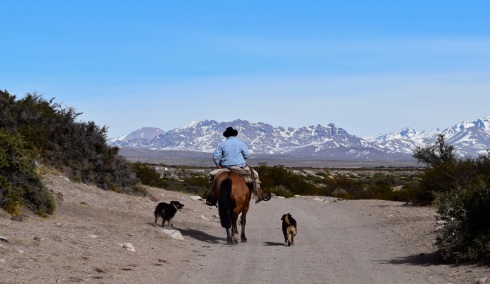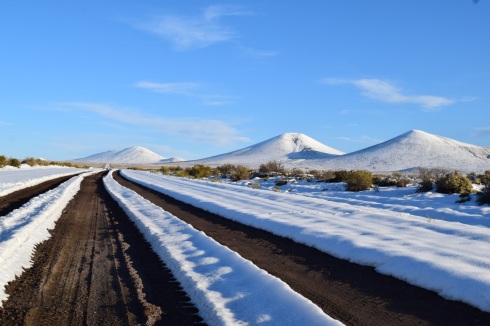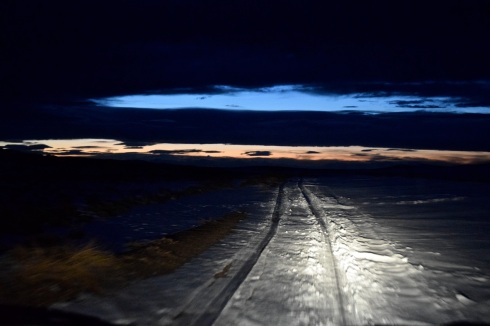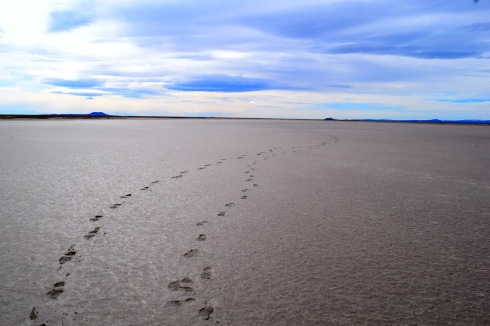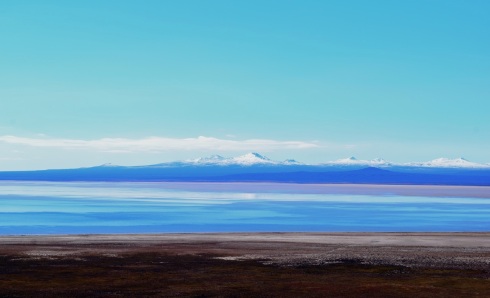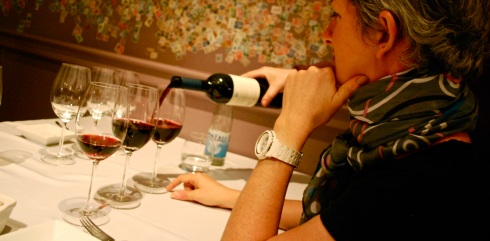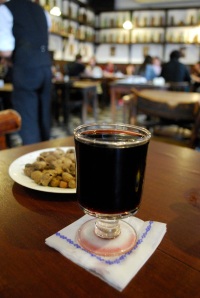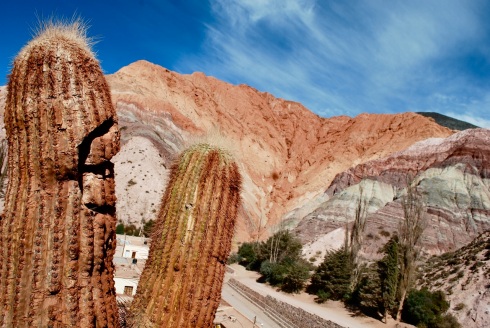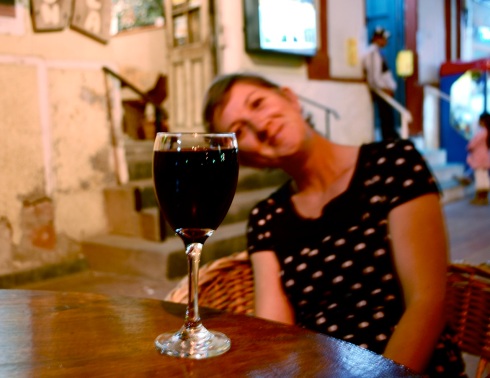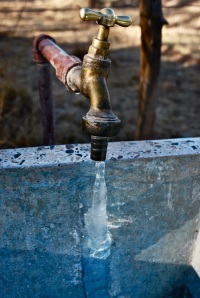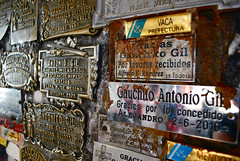
Blood moon, Parque Provincial Ischigualasto, San Juan, Argentina.
Alta Gracia, Córdoba, Argentina
[by Paula]
In our previous life, if I read or heard talk of the kind of travelling that was of the fluid, go-where-the-road-takes-you variety, it always smelled faintly of bullshit to me. It seemed liked an idealised kind of travelling, the kind that people liked to think they were doing, if only they could be that relaxed.
We’ve had enough of those kinds of days and experiences now to realise it’s not bull, it is possible – with the luxury of time – to take each day as it comes and not worry about what’s ‘supposed’ to happen. We still love the planning aspect of the trip – poring over maps and deciding what we want to see, but we’re equally prepared to chuck it all out the window if necessity, weather, the van or the mood requires. I have battled my inner List-Making Control Freak (although am still never actually without a to-do list) while Jeremy has tackled his inner Restlessly Impatient, and we have let our inner Fuck Its prevail – well, at least for the most part.
As I write this we are beginning an unexpected four-and-a-half hour wait at the top of a mountain pass because the route is closed til 7pm for roadworks. We won’t make it to where we’re heading but it doesn’t really matter because we don’t have a particular plan or schedule. The British answer to absolutely every circumstance is to make a cup of tea, so that’s what we’ve done. And because this is Argentina, where one can barely move for campsites, we don’t have to stress out about finding somewhere to sleep before dark. The worst that can happen is that we’ll bed down right here with the diggers and dump trucks.

A delay with a view; crossing the Miranda pass to Chilecito, and waiting four and a half hours for the road to re-open…
Now, more than ever, we are travelling without a plan and sometimes it can feel a bit flaky. While we’ve hardly been burdened with high-pressure deadlines over the last four years, until now we’ve always had at least some loose or distant goal to consider. Be that getting to a certain place for the right season, meeting up with the parents or friends, planning flights for a trip home, organising a Workaway placement, trying to get the van fixed, or fitting things around story ideas and work deadlines. The ultimate aim was making it to Tierra del Fuego in the summer. Turned out it wasn’t the summer we planned, but a year later.
Not for the first time since then we ask ourselves, what’s next? And recently the answer has been slowly taking shape as that vast country that we never really planned to visit, called Brazil… more of which later.
Before taking to the road again, our final month in Salto de las Rosas – where we were doing a three-month Workaway placement – also involved an unplanned turn of events. Two weeks before our leaving date, our British host Susan made a sudden decision to return to the UK to live, with Dave and her daughter, for family reasons. After 10 years in Argentina, they would be packing up, selling everything, trying to re-home their six pets, finding a temporary house-sitter and navigating a quagmire of bureaucracy to settle bills, legal stuff and the sale of Susan’s land and three properties. They had less than 6 weeks to do it in. Suffice to say, they had a lot to do and probably needed some help.
While Susan embraced her inner Spreadsheet Maker and got cracking with the plan, we volunteered to stay an extra two weeks and did a quick metamorphosis from wood-cutting grunts into assistant planners / organisers / house-movers / salespeople / cleaners / photographers. The houses, land and almost everything they owned – which was a lot – were listed and photographed. Yard sales were organised and people started flocking to buy all their belongings.
They’ve been through this before – as have we – and know what to do. But I don’t think they’ll mind me saying there were, understandably, moments when they froze into rabbits-in-the-headlights mode and we had to usher them off the highway. We became part-time counsellors and cajolers when needed, which often involved wine, laughing and sporadic outbursts of swearing.
With a necessary detachment we dragged things from cupboards, emptied shelves, lugged furniture and helped sort things into priorities. My inner List-Making Control Freak was released so it could be free to do things like help boss Dave into making an inventory of his mountainous collection of musical equipment and gadgets, or deciding which of his 345,000 computer/phone/amp/unidentifiable cables he was taking to the UK with him.
It was really hard for them to be getting rid of everything, with so little time to process the emotional upheaval of the move. We fully empathised with their biggest worry – leaving the two dogs and four cats behind. In the end, their lovely neighbour agreed to house-sit and take care of all the animals – phew.
As our departure approached, they were exceedingly generous in handing on plenty of useful stuff to us, plus a never-ending supply of food. We had some drunken farewell meals, a hungover asado with friends Malcolm and Sue, and stocked up with a couple of cases of their La Fraccion Malbec for the road. We emptied the house we’d been living in, gave it a final swish of the mop and drove off somewhat heavier-of-van than before.
It probably took a week or so for us to completely re-adjust to full-time van life again, and we’re very much back in the swing of things. Getting used to the relative lack of space, privacy and cleanliness takes a wee while, but we soon forget what it’s like to take these things for granted. It helps that the weather has been getting progressively warmer (albeit still peppered with some grim grey days) and we have summer stretching ahead of us.
During a stop in Tunuyán, in the Valle de Uco wine valley south of Mendoza, we were finishing off a work project at a campsite near the town. As we were cooking one evening, Jeremy said: “why is the van shaking?”.
It was rocking, fairly decisively, from side to side.
“Maybe it’s the wind,” I offered. Only it wasn’t windy.
With hindsight, it seems ridiculous that in the few seconds that followed we considered that someone was outside rocking the van for a joke, or perhaps an animal had got underneath (in our defence, the last time we had a mystery rocking incident, it was due to a huge pig scratching itself on the underside of the van).
Jeremy leapt out to have a look, and quickly realised all the trees were swaying in unison and the ground was shifting from side to side with remarkable force.
“It’s an earthquake!” he yelled.
I jumped outside and we just stood there, quite dumbstruck, for maybe one or two minutes as the ground quietly heaved, and we did little involuntary surfing motions. It was the first time we’d experienced a major earthquake, and it was rather discombobulating. It was obvious it had been a big one, and luckily we had internet access to check. It was quickly reported to be a massive 8.3-magnitude earthquake that had struck off the coast of Chile, nearly 300 miles away on the other side of the Andes. There were some big aftershocks, and most of the evening was spent on the internet, following events over the border.
When we left there we still hadn’t decided where we were going. Despite having three-and-a-half months to think about it while we were in Salto, we still didn’t seem to have a clear travel plan. We decided to head to Potrerillos, as it looked like an area that would be a nice drive with potential walking.
We wondered why there were so many large groups of youngsters at the campsite. Frankly, that never bodes well for a peaceful night, but our fears weren’t realised. A couple of days later, in Luján de Cuyo, we noticed that the supermarket alcohol aisles were roped off because all sales were banned for four days during the ‘Día del Estudiante’ (students’ day). Hmmmm.
We’d booked a fancy meal at a winery for my birthday the following day, so headed to the nearest campsite we could find. We were clearly out of practice because we decided to pitch up at this place despite the glaringly obvious ominous signs:
a. large group of students. b. large amount of booze and c. excessively large speakers.
We were very keen to shower because of our impending posh restaurant plans, but had to battle for a slot in the one, dirty, wood-fired shower that was being hogged by all the students (since when did they wash anyway?).
There followed one of the worst night’s sleep we’ve had on the trip – really shit, booming music that just never ended. I try to be zen about these things, but that usually expires by about 2am. Normally 4am is the latest these parties go on to, so I waited. By 5am I was near to tears and feeling like the next day had been spoiled. We got up, packed up the van as best we could and moved to a spot that was as far from the music as we could find. I think it finally stopped about 6am, and we got a few hours sleep.
Sometimes our life is one of quite strange contrasts. We got up to a cold, drizzly, day and slopped around in the wet, grumpily trying to get ready and pack up the van. We flattened our bed-hair in the decidedly rustic campsite bathrooms and sprayed on lots of deodorant. By midday we were dressed up and shiny, looking like normal members of society. At the Ruca Malen winery and restaurant, the previous night was soon forgotten as we tucked in to a gourmet five-course tasting menu with paired wines. It was a phenomenal, innovative meal with lots of seasonal vegetables and fresh tastes, but they still had the sense to include a sublime Argentine filet steak.
After sleeping that off we finally settled on our next destination. Only to completely change it as we looked at the map again during a milanesa sandwich road-stop. We turned and headed for Sierra de la Quijadas national park, which we’d never heard of but were drawn to by descriptions of its red rock landscapes and wildlife.
At the park’s perfect little free camping area we really got back into the groove, remembering why we love to be out there with nature, living the quiet life, and going to places we didn’t know existed.
We saw maras for the first time (large rabbity looking rodents that belong to the guinea pig family), loads of little birds came to visit – some cheekily coming into the van to look for crumbs – and we got one of our best close sitings of a condor during a fabulous hike through the park.
At sunset we walked along to a viewpoint to watch the rocks turn a fiery red.
We were just talking about how we loved going to these peaceful places as we headed to another desert park further north, Parque Provincial Ischigualasto. But as we arrived there was a queue of traffic and huge crowds of people. It was closed for a running event, so we wild camped nearby for the night and waited. Arriving first thing Sunday morning, there was a another queue of traffic waiting to get in before opening time, which is really not a very Argentinian thing to do. What the..?
After a bit of discussion at the ticket office, we gathered that it was a special day because of the upcoming supermoon/lunar eclipse event that night. Having not kept up with our lunar news, we had no idea! The campsite was packed with moongazers and TV crews, but it was a fun atmosphere.
Weirdly, the only way to drive around the park is as part of a convoy – packed again, but well worth it for its lunar-style landscapes, rock formations and amazing colours. Again we wondered how we’d never heard of the place.

Jeremy is dwarfed by yet another bizarre rock formation at Parque Provincial Ischigualasto, San Juan, Argentina.
That night we took our tea flask and headed to a rocky spot to watch the moon. It was a clear starry night and we got a great view of the eclipse, which turned orange by about midnight.
For the first time in ages, we hiked in super hot weather, dodging giant cacti and really feeling like desert rats again.
From there we decided to head north to La Rioja province and the town of Chilecito. It wasn’t too far but we did have to negotiate a winding mountain pass on the way. As we took the turning towards the pass we saw an ancient-looking sign saying the road was closed for construction.
We asked the village police sergeant about it and he said that some traffic was still being allowed through, but we’d have to drive up there and ask. We stopped to talk to a few people on the way and they all said the same… just turn up and see what happens. As we approached the barriers we looked at the foreman hopefully. Nope, the road was shut for several more hours so we’d just have to wait, he said.
So here we are, overlooking a phenomenal valley, drinking tea, playing Yahtzee and hoping that the road really does re-open before dark. Okay, I’d rather be camped somewhere, cooking and cracking open a bottle of Malbec, but it’s not so bad. Both of us – yes, even Jeremy – have developed a surprisingly large tolerance for just waiting.
If nothing else, it’s given me a chance to write this blog post and get it off my to-do list.
Days: 1,469
Miles: 40,458
Things we now know to be true: If you gaze at the moon for long enough, you get a cricked neck.
MORE PHOTOS BELOW. AS WITH THE PICTURES ABOVE, CLICK ON ANY IMAGE TO OPEN THE GALLERY:




